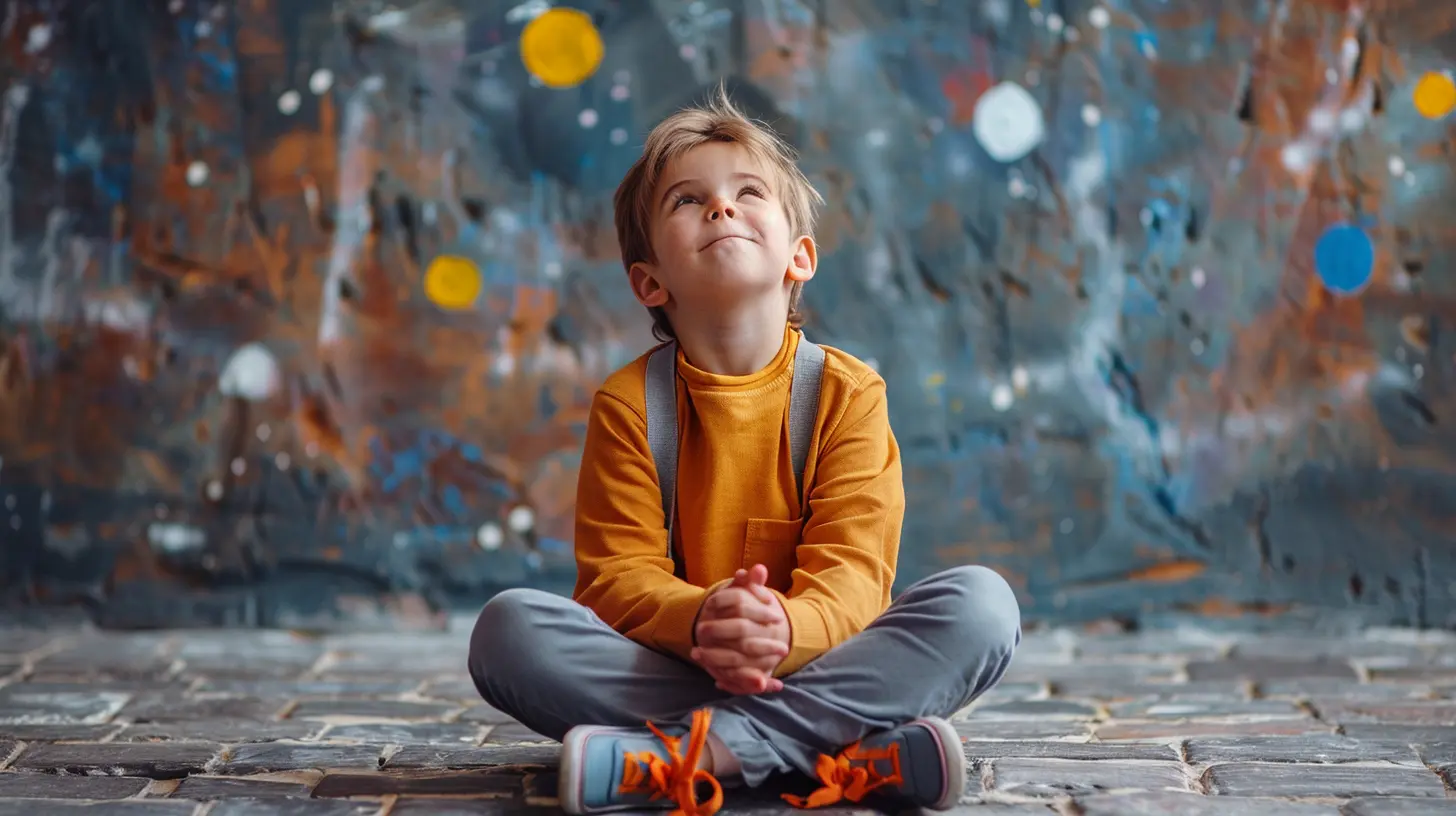Why Patience and Delayed Gratification Are Key in Teaching Gratitude
21 July 2025
Let’s be real—parenting isn’t for the faint of heart. Between tantrums over the wrong colored cup to the never-ending bedtime routine, it can feel like you’re constantly putting out fires. But here’s the kicker: some of the most valuable life lessons we pass on to our kids don’t come from lectures or punishments. They grow out of the tiny moments—waiting in line, saving up for a toy, or watching others get their turn first.
That’s where teaching patience and delayed gratification come in. These two concepts aren’t just about self-control. They are the secret sauce to nurturing something deeper in our kids—gratitude.
Let’s dive into why that connection matters and how we, as parents, can help our children embrace it.
Why Gratitude is More Than Just Saying “Thank You”
Before we can talk about patience and delayed gratification, let’s clear the air on what gratitude really is. Gratitude goes beyond manners. It’s not just about saying “thank you” when someone hands you a cookie (although that's a good start!).Real, deep-down gratitude is a mindset. It’s the ability to recognize the value in what you have and feel content—even joyful—about it. It’s about appreciating not just the gift, but the thought behind it, the effort someone made, or the experience it created.
In today’s instant-everything culture, fostering this kind of deep appreciation can be tricky. We’re raising kids in a world where Amazon delivers in hours, YouTube provides endless entertainment, and answers are just a Google away. That’s where patience and delayed gratification come in as our parenting MVPs.
What is Delayed Gratification (And Why Should You Care)?
If you’ve ever told your child, “No, you can’t have candy before dinner,” congrats—you’ve practiced teaching delayed gratification.Delayed gratification is the ability to resist the now in exchange for a better later. It’s the decision to wait for two marshmallows tomorrow instead of gobbling up one today (shoutout to the famous Stanford marshmallow experiment, anyone?).
Here's the thing—when kids learn how to delay gratification, they start to understand the value of effort, timing, and anticipation. And once they get that, gratitude starts to grow organically.
Think about it: when your child has to wait, save, or work for something, it stops being just another item on a checklist. It becomes meaningful. They treasure it more because it didn’t come easy. And when it finally arrives? That “thank you” has a whole different weight.
How Patience Builds Character (And Gratitude Too)
Patience is a little like a muscle—the more you use it, the stronger it gets. And let’s be honest, kids aren’t naturally patient beings (heck, neither are most adults). But that’s okay. It’s something we teach, not expect.Every time your child waits their turn at the playground or sits through a long car ride without whining, they’re building not just patience, but also character. They’re learning how to manage discomfort and accept that the world doesn’t revolve around them. That’s a big deal.
And guess what? That humility? That awareness that things don’t just appear magically? It leads straight to gratitude. Kids who understand that good things take time tend to appreciate them more when they arrive.
The Science Behind Patience and Gratitude
Now, if you’re into the science-y side of things (like I secretly am), here’s where it gets super cool. Psychologists have found that kids who can delay gratification tend to do better in school, have better relationships, and even handle stress better as adults.But there’s more: studies also link the ability to delay gratification with higher levels of gratitude. When kids learn to wait, save, and work for things, they become more appreciative of the outcomes. They know what went into it. They realize its worth.
Patience teaches kids that not everything is instant. Gratitude grows in that gap—between desiring something and finally getting it.
So really, patience is the soil, delayed gratification is the water, and gratitude? That’s the blooming flower.
Real-Life Examples That Make It Click
Let me paint some pictures.Scenario 1: The Birthday Countdown
Ever noticed how kids get wildly excited when they’re waiting for their birthday? For weeks in advance, they talk about it, plan the party, pick out the cake... it's a whole vibe.So, when the big day finally comes, it's not just about the presents. It’s about the build-up, the anticipation, the feeling that something important is happening. That’s delayed gratification in action—and it makes their gratitude go way up.
They’re thankful not just for the gifts, but for the entire experience.
Scenario 2: Earning a Toy
Let’s say your child wants a new toy. Instead of buying it immediately, you create a reward chart—five stars a day for doing chores or being kind, and once they reach 100 stars, they can pick the toy.When they finally get it, it’s not just a toy. It’s a trophy. They value it more because they earned it. They feel proud, and their “thank you” isn’t just polite—it’s heartfelt.
Why Instant Gratification Spoils Gratitude
Look, we all love treating our kids. And in moderation, instant rewards are fine. But if every desire is met right away, kids start expecting things on demand. Worse—they stop seeing them as special.It’s like eating your favorite dessert every day. Eventually, it loses its magic, right?
When everything comes too easily, gratitude loses its shine. There's no sense of earning it, no reason to feel grateful. It’s just… expected.
That’s why it’s so important to stretch out the space between want and have. It’s in that space where kids learn to appreciate.
Tips for Teaching Patience and Delayed Gratification in Everyday Life
Don’t worry—you don’t need to whip out a psychology textbook or create an elaborate system. Here are some simple, everyday ways to build these skills:1. Model It Yourself
Kids are little copycats. If they see you getting frustrated in traffic or complaining while waiting in line, they’ll do the same. But if they see you keeping your cool, they learn from that too.2. Make Waiting Fun
Got a long wait at the doctor’s office? Turn it into a game. Count how many people are wearing red, play “I Spy,” or start a silly story. Waiting doesn’t have to be boring—it can be a bonding opportunity.3. Use Visual Countdown Tools
Calendars, sticker charts, or even a homemade paper chain can work wonders. Seeing the time pass visually helps kids understand that waiting is a process, not a punishment.4. Celebrate Effort, Not Just Results
When your child waits or works hard for something, acknowledge it. Say, “I saw how patient you were—nice job!” That reinforces the behavior and makes them feel proud.5. Practice Saying “Not Yet” Instead of “No”
This small shift makes a big difference. “Not yet” gives hope and sets up an opportunity to wait. It teaches patience in a more positive light.6. Encourage Saving
Whether it’s money, treats, or screen time, give your kids a chance to save and choose when to use it. It gives them control and teaches the value of earning.The Long-Term Payoff: Kids Who Are Grounded and Grateful
The truth is, patience and delayed gratification won’t give you overnight results. It takes time (ironically!). But over the years, you’ll notice your child becoming more thoughtful, more resilient, and yes—more grateful.They’ll start to think before acting. They’ll reflect before reacting. And they’ll appreciate things on a level that goes far beyond “thanks.”
Gratitude becomes a habit, not just a reflex. And that’s the kind of life skill that lasts forever.
Final Thoughts: It’s Worth the Wait
In a world obsessed with speed and convenience, it can feel like we're swimming upstream trying to teach patience and delayed gratification. But I promise you—it’s one of the best gifts you can give your child.It’s not flashy. It won’t show up in a report card. But it builds emotional strength, character, and genuine appreciation in a way nothing else can.
So the next time your child whines about waiting, take a deep breath. Smile. And know that in those moments, you're not just surviving—you’re raising a human being who’s learning to be truly thankful.
And that's something worth being grateful for too, right?
all images in this post were generated using AI tools
Category:
Teaching GratitudeAuthor:

Max Shaffer
Discussion
rate this article
2 comments
Cooper McRae
This article beautifully highlights the importance of patience and delayed gratification in fostering gratitude in children. By encouraging them to wait for rewards, we teach valuable life skills such as resilience and appreciation. Cultivating these traits not only enhances their emotional well-being but also strengthens family bonds and promotes deeper connections.
November 17, 2025 at 3:42 AM
Julia Diaz
What a beautifully insightful article! Teaching patience and the value of delayed gratification truly lays the foundation for nurturing gratitude in our children. Thank you for sharing!
August 4, 2025 at 2:31 PM

Max Shaffer
Thank you for your kind words! I'm glad the article resonated with you. Teaching patience is indeed vital for fostering gratitude in children.


